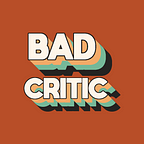The White Ribbon (2010)
“I gave God a chance to kill me. He didn’t do it, so he’s pleased with me.”
The White Ribbon is arguably Michael Haneke’s best film, and one that encompasses the themes he has explored throughout his career. The story follows several families in a small German village in the years before World War I. The Baron, the Pastor and the Doctor, all powerful men, set the rules of the society and exert their will over the women and children, but a series of mysterious violent events threatens the natural order of the town.
Cinematographer Christian Berger achieved the lucious black & white images by shooting on colour film and converting the images to grayscale in post-production. He and the crew used natural lighting whenever possible, and for the darker scenes (which required additional lighting), they worked over the images during post so that they still looked natural. The soundscape draws on naturally occurring sounds as well, and the long single-shot takes lets the actors relax into the scenes. The result is so immersive and intimate, it feels like watching a piece of theater or even a documentary.
Throughout The White Ribbon, the looming violence of the coming wars weighs on every moment. By emphasizing the perspective of the town’s children, Haneke clues us in to the ruling class’s severity and the hypocrisy of the adults. Though the village may seem idyllic and peaceful, the story presents politeness and tradition as innately violent, a sort of infection that compounds itself between generations. No explanation for the violence is ever presented, but the answers are nevertheless crystal clear.
